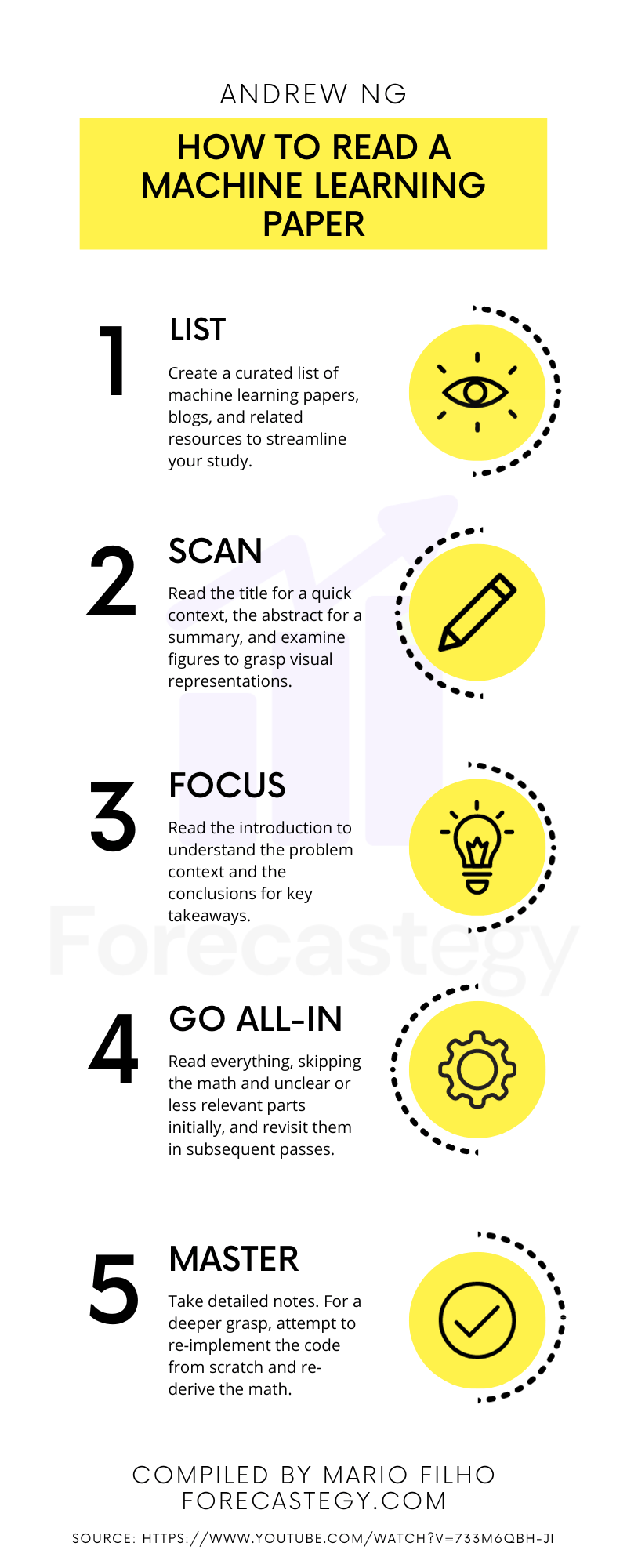
There are thousands of machine learning papers published each year.
Finding the small percentage of papers that are relevant to you feels overwhelming.
In this lecture, Andrew Ng, provides guidance on how to efficiently read and understand research papers in the field of machine learning, as well as offering career advice for those interested in machine learning.
His personal approach to mastering a new body of literature involves compiling a list of papers and resources, then skimming and understanding each paper to a certain extent.
His method reminds me of the traditional multi-stage approach to recommendation systems, where the first stage prunes the set of items with a simple model, and the later stages uses more complex models to make the final recommendation.
Just like that, we first skim the papers to prune the original list, and gradually read more carefully to understand the papers that are most relevant to us.
He suggests that reading 5 to 20 papers may give a basic understanding of an area, while reading 50 to 100 papers could lead to a very good understanding.
After collecting a list of papers, Andrew describes his recommended method for reading a single research paper, which involves taking multiple passes through it.
The first pass includes reading the title, abstract, and figures, as these often summarize the entire paper.
The second pass involves reading the introduction, conclusions, and skimming the rest of the paper.
He advises that the related work section can sometimes be skipped or skimmed on the first read, as it may be difficult to understand without familiarity with the literature.
Subsequent passes might involve reading the paper without focusing on the math, and then reading the entire paper, skipping parts that do not make sense.
He points out that with practice, you can become faster at understanding research papers, and that it is common for papers to contain both highly influential and less important content.
Ng also provides advice on how to deeply understand the math in a paper, which includes taking detailed notes and trying to re-derive the math from scratch.
He suggests that this practice can help in learning how to derive new algorithms.
Similarly, for code, he recommends re-implementing algorithms from scratch to ensure a strong understanding.
You can do it easily with Python.
The lecture concludes with career advice, emphasizing the importance of learning steadily over time rather than cramming, and the benefits of reading a few papers each week for an extended period.
Ng advises focusing on the team and manager one will work with when selecting a job, rather than the brand of the company.
He also warns against accepting job offers that are vague about the specific team or project one will join, as well as being cautious about rotation programs.
Ng encourages students to choose work that allows them to learn the most and to do meaningful work that helps others.
He suggests that there is important work to be done in AI and data science outside of the traditional tech industry, and that engaging with these industries can lead to new research problems and cutting-edge work.
Throughout the lecture, Ng emphasizes the importance of continuous learning, practical experience, and the impact of one’s work environment on personal growth and success in the field of machine learning.